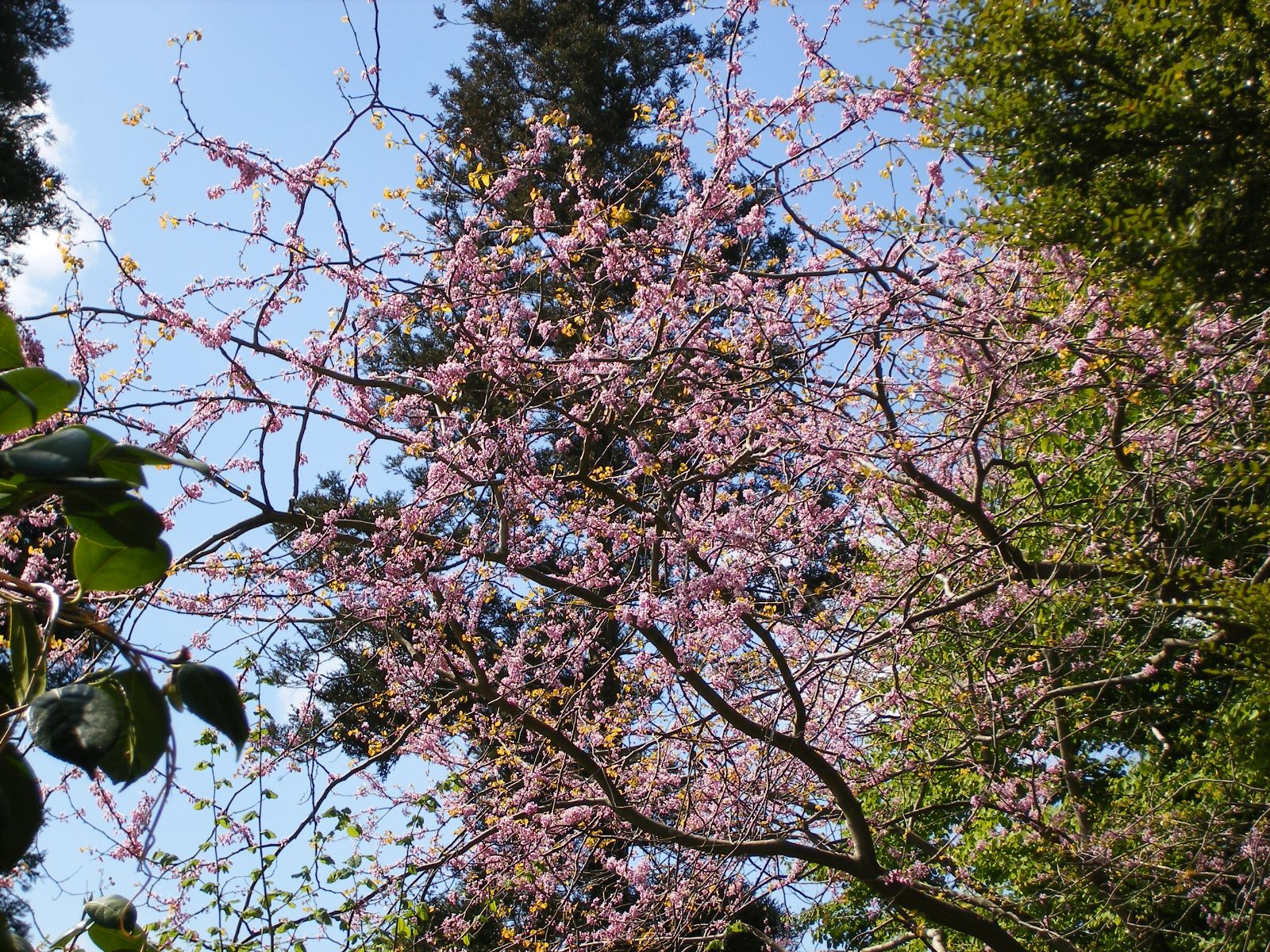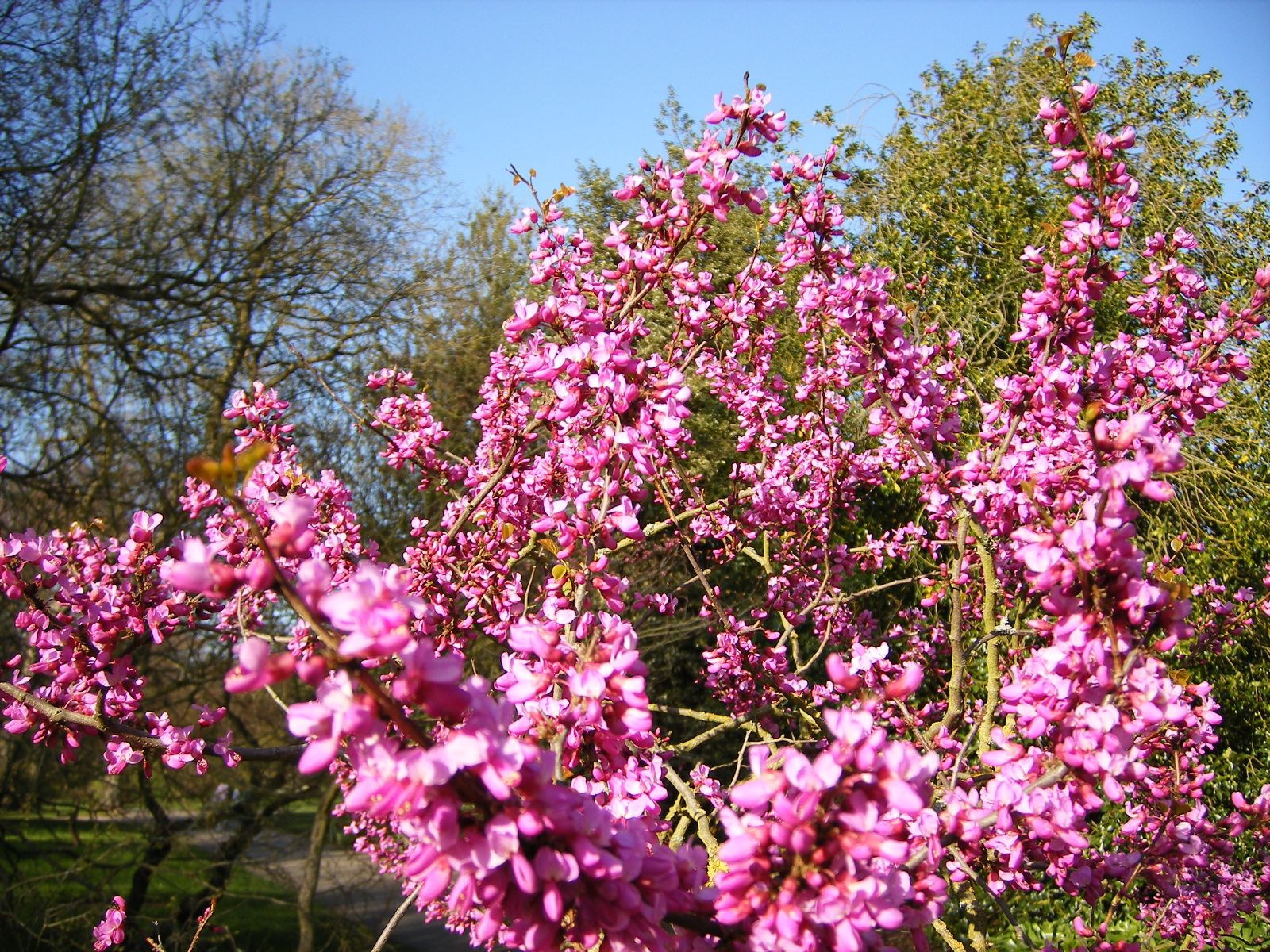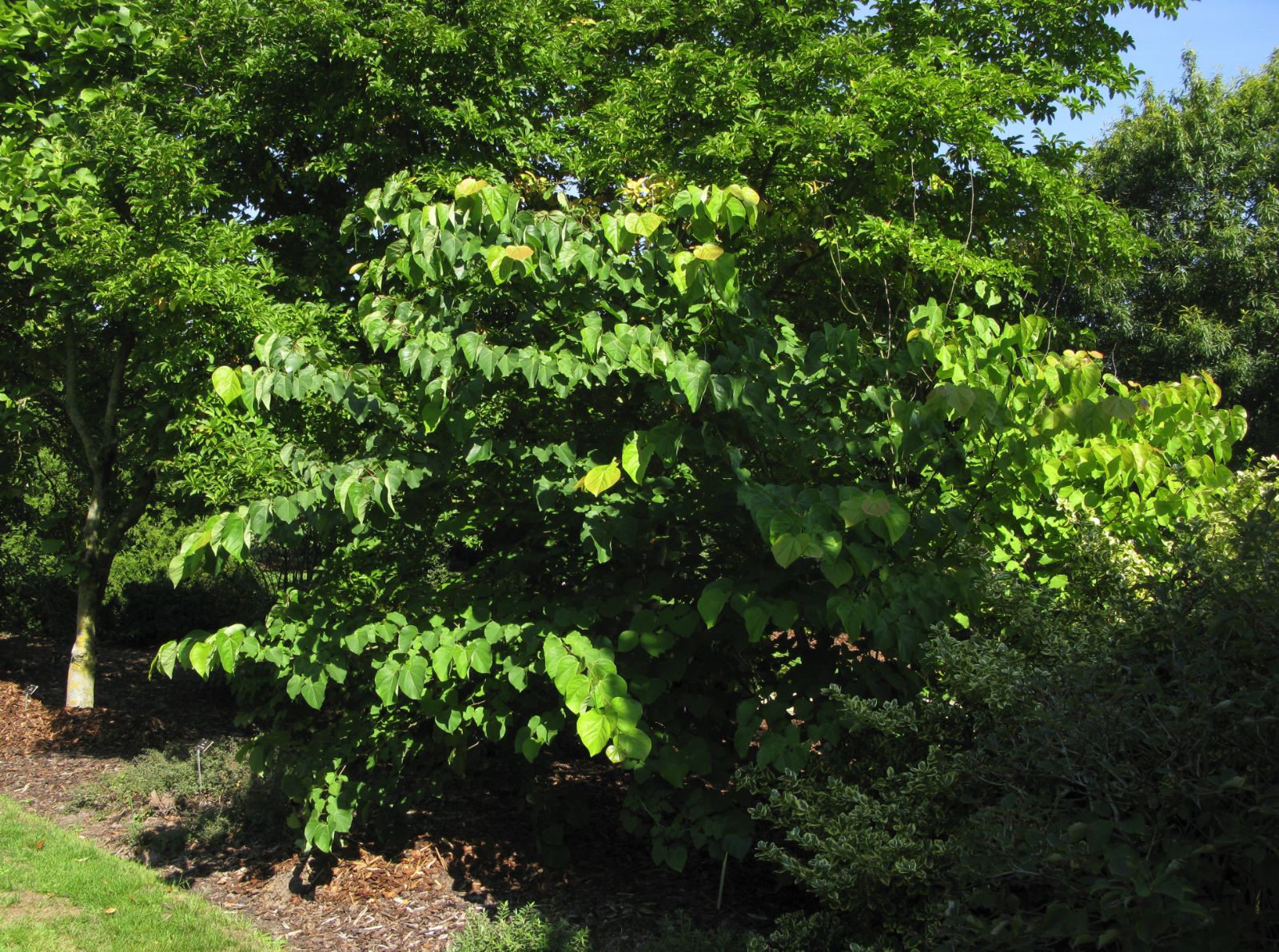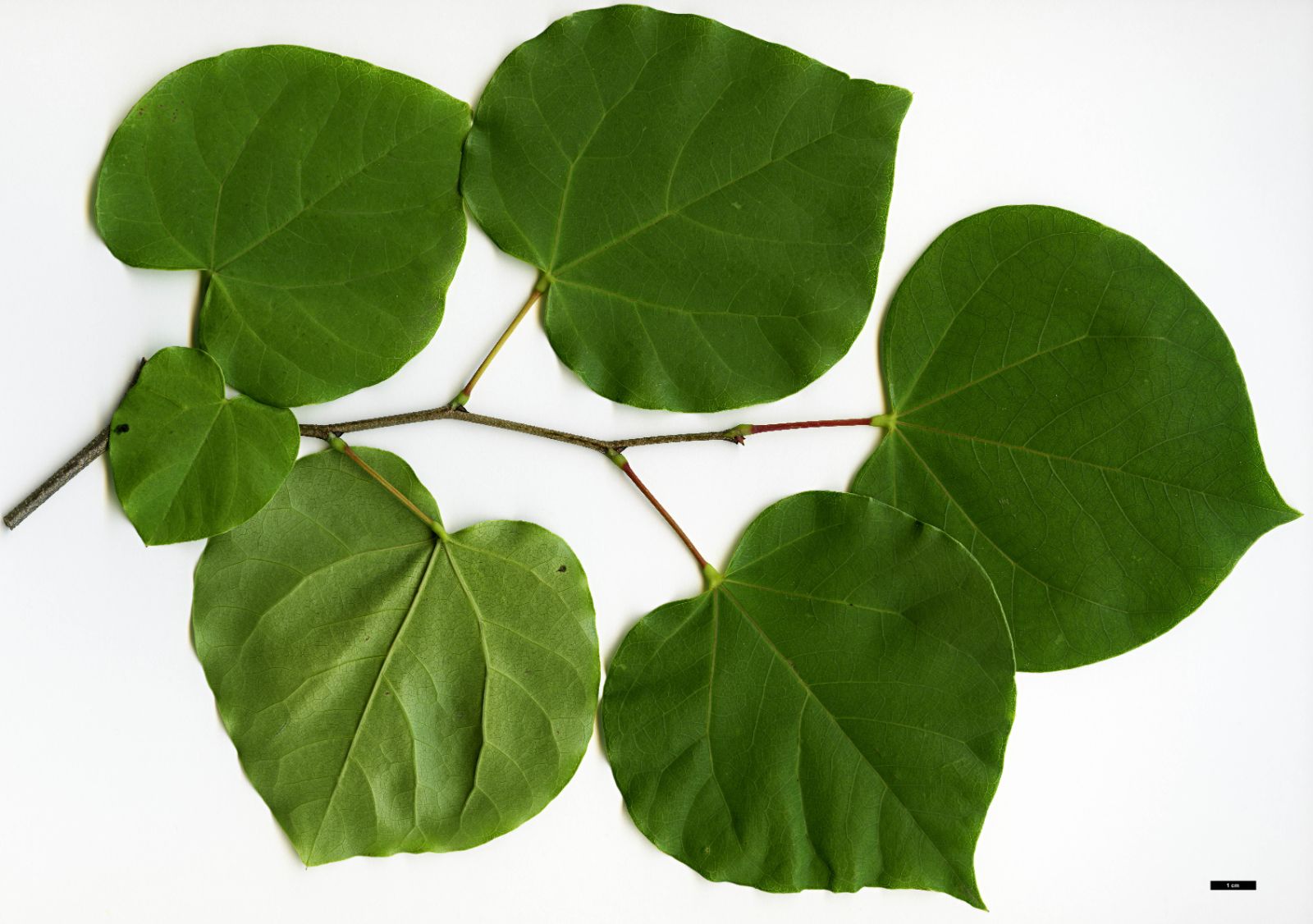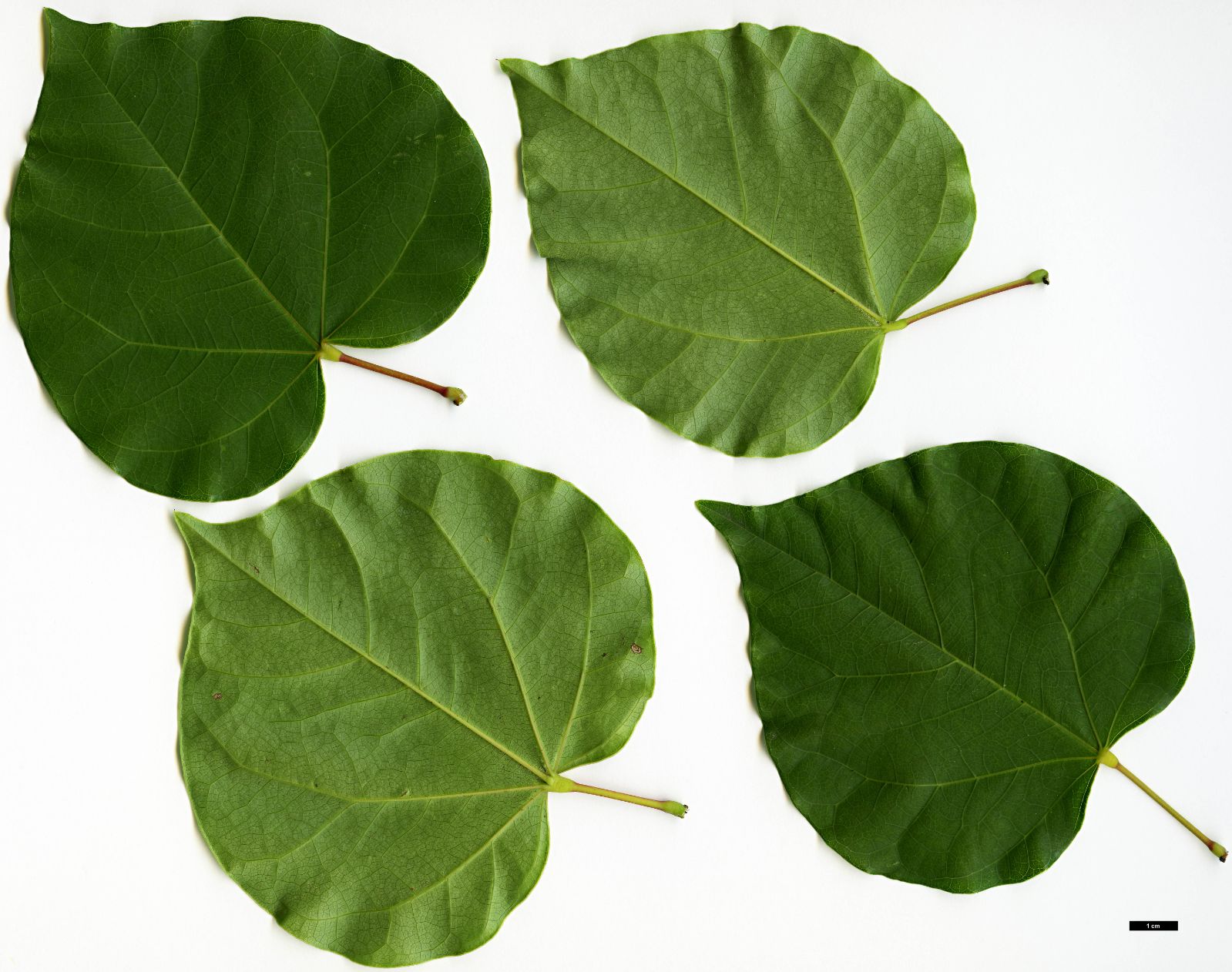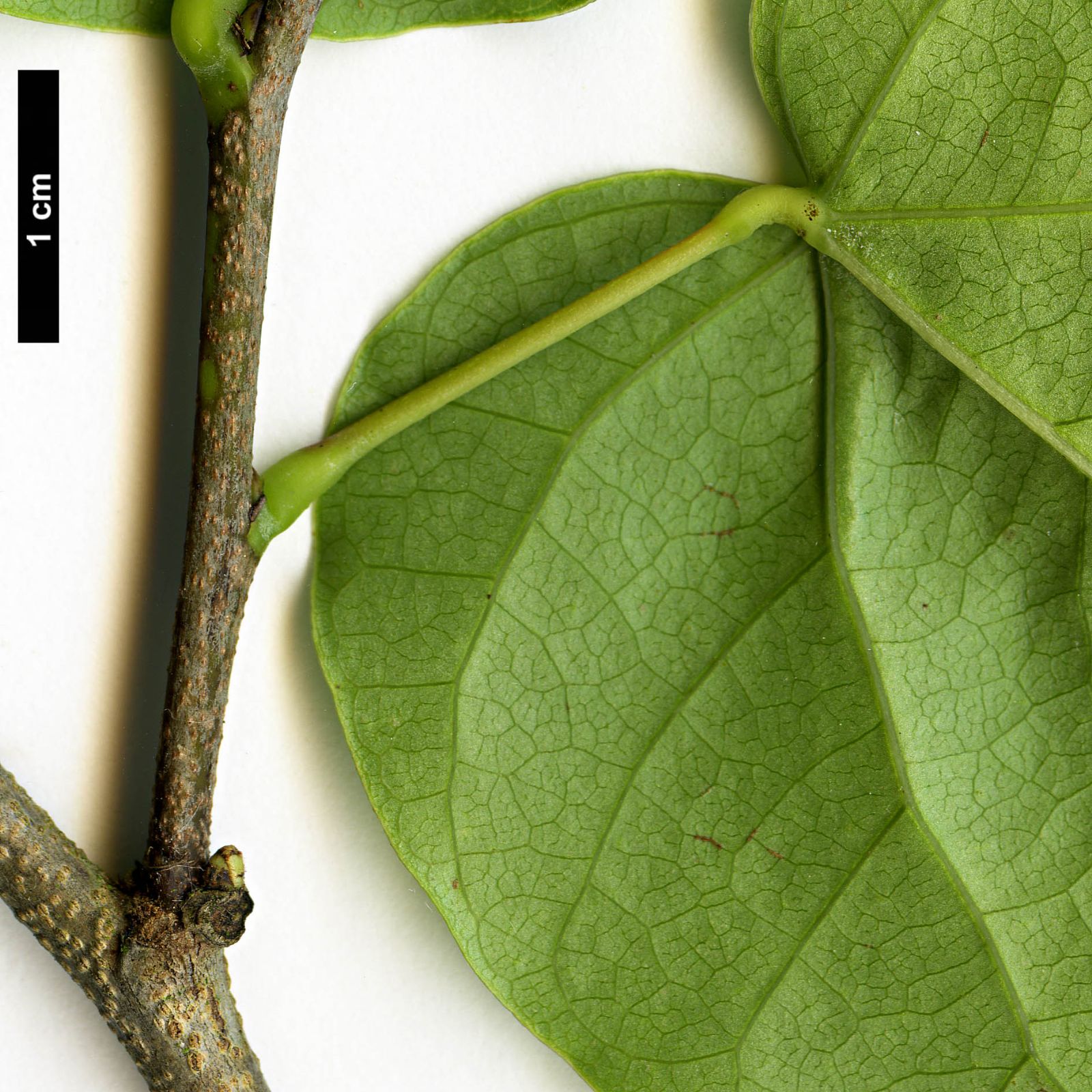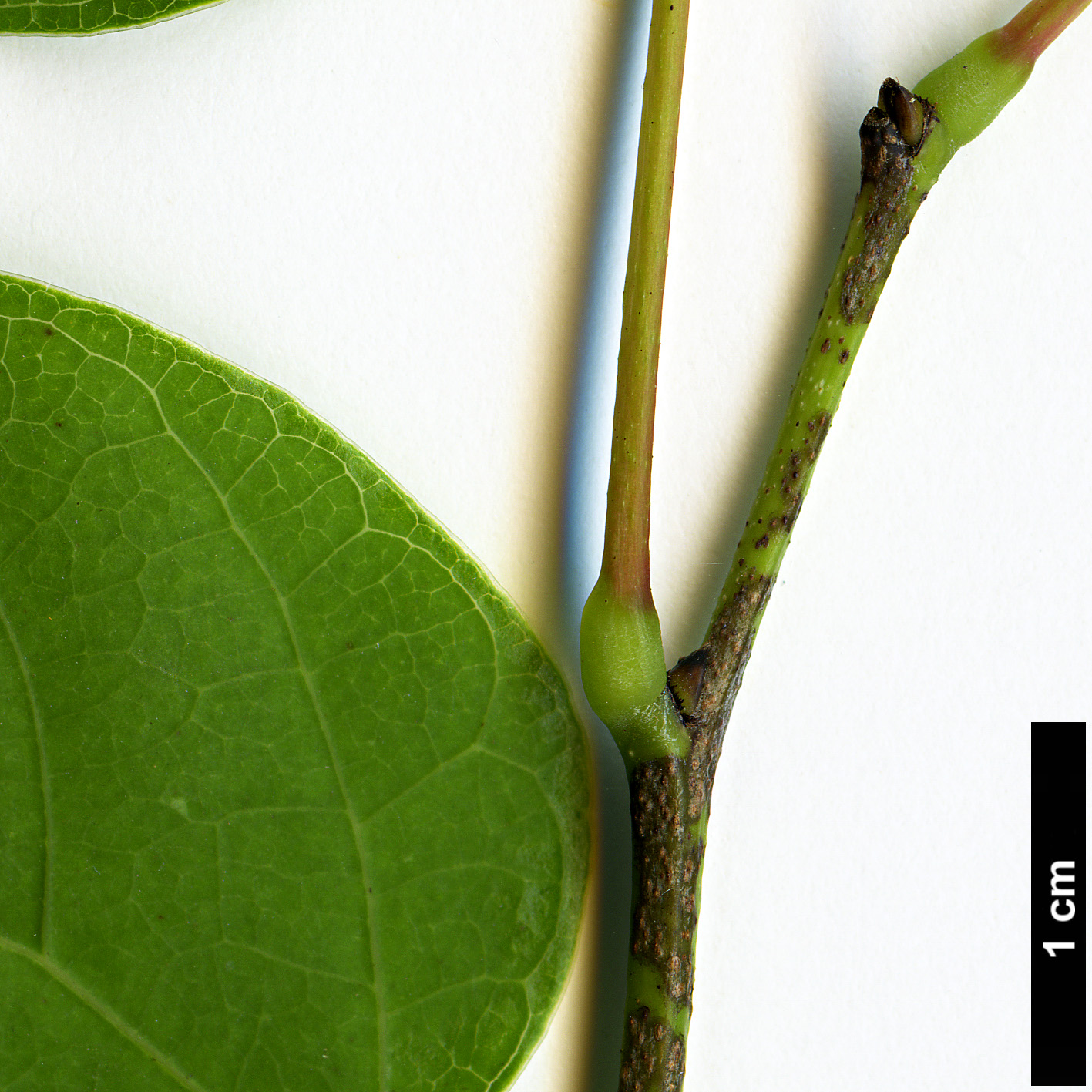Cercis chinensis
Credits
Article from Bean's Trees and Shrubs Hardy in the British Isles
Recommended citation
'Cercis chinensis' from the website Trees and Shrubs Online (treesandshrubsonline.
Genus
Common Names
- Chinese Redbud
A tree sometimes 50 ft high in a wild state, with a trunk 3 to 4 ft in diameter, but in cultivation merely a shrub. Leaves heart-shaped, pointed, 3 to 5 in. long, nearly or quite as much wide, glossy green, and glabrous except for a few hairs beneath in the vein-axils. Flowers in close clusters of four to ten, pink, 3⁄5 in. long. Pod 31⁄2 to 5 in. long, taper-pointed. Blossoms in May.
Native of China, and probably the largest of the genus. It is quite a failure in the open ground at Kew. It has flowered on a wall, but is evidently a plant better suited for climates with hotter summers than ours. There is a considerable resemblance between this tree and C. canadensis. Both have pointed, bright green leaves, quite distinct from C. siliquastrum. C. chinensis is distinguishable out of flower from C. canadensis by its larger, thinner stipules, and by the leaves being glossy beneath when quite young, those of C. canadensis being duller and more or less glaucous. The adult leaves appear also to be larger; there are some in the Kew Herbarium, gathered near Peking, 61⁄2 in. across. There is an example at Lanarth, in Cornwall, 20 ft high.

